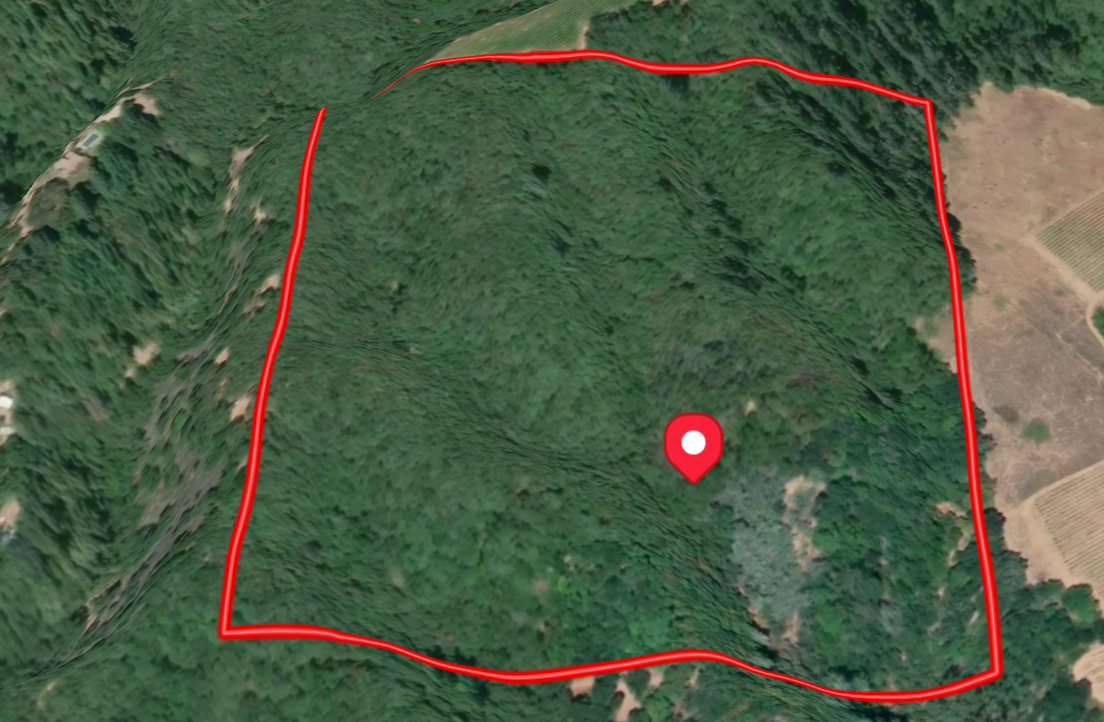Land flipping in the United States has emerged as a thrilling opportunity for savvy investors looking to capitalize on the real estate market.
Unlike traditional real estate investing, land flipping involves purchasing undeveloped land at a lower price and quickly selling it for a profit.
This investment strategy has gained momentum due to its potential for high returns and the relatively low maintenance required compared to other forms of property investment.
Selecting the right state for land flipping is crucial, as it can significantly impact profitability. Factors such as economic growth, demand for land, and regulatory environment play pivotal roles in the success of a flip.
Certain states offer more enticing incentives and prospects for land flippers due to these favorable conditions.
Here at LandVerse, we emphasize the importance of understanding market trends and state-specific dynamics.
We advise clients that areas with booming economies, population growth, and development projects are often prime locations for land flipping. These regions can provide investors with a robust platform to launch successful land flipping ventures.
Understanding Land Flipping

In the world of real estate investing, land flipping represents a unique opportunity to generate significant profits through strategic buying and selling.
Below, explore what land flipping entails and why it’s gaining traction among investors.
What Is Land Flipping?
Land flipping is the process where an investor purchases undeveloped land at a lower price and then sells it for a higher price without making substantive improvements.
The transaction typically hinges on the investor’s ability to identify underpriced land opportunities where the market conditions anticipate growth or increased demand.
- Identification: Investors find undervalued land parcels.
- Purchase: They acquire the land at a competitive price.
- Sale: The land is resold at a markup, aiming for a high return on investment (ROI).
Benefits of Land Flipping
Investors are captivated by land flipping for several reasons:
- High Gross Profit Potential: When executed well, the gap between purchase and selling price can yield a sizable gross profit.
- Return on Investment: With fewer initial costs involved compared to developed properties, land flipping can offer a more attractive ROI.
- Simplicity and Speed: Without the need for renovations or developments, transactions can be swift and less complex.
In essence, investors can potentially achieve significant financial returns by capitalizing on the right pieces of land at the opportune moment.
Land flipping is a vibrant, dynamic avenue for building wealth through real estate.
Key Factors for Successful Land Flips

To profit in land flipping, one must meticulously understand and apply several critical factors.
These include keen analysis of market patterns, selecting strategic locations, adhering to zoning ordinances, and conducting comprehensive physical and environmental assessments.
Analyzing Market Trends
Successful land flippers keep their fingers on the pulse of real estate market trends. They track data on property values, demand, and demographic shifts.
Efficient use of tools like MLS listings, property databases, and trend analysis software helps them anticipate market movements and identify potential hotspots for investment.
Importance of Location
Location is paramount in land flipping. Flippers often focus on areas with burgeoning economic growth, infrastructure development, or planned future improvements.
The proximity to amenities such as schools, transportation hubs, and commercial centers dramatically affects land attractiveness and demand.
Zoning Laws and Regulations
Understanding zoning laws and regulations is critical as they dictate land use. Flippers collaborate with local authorities to verify permissible land use, possible restrictions, and required permits.
Knowledge of these laws ensures that land purchased for flipping can be sold without legal hindrances, thereby safeguarding profitability.
Physical and Environmental Due Diligence
Conducting due diligence is a non-negotiable step. This includes assessing topography, soil quality, and access to utilities.
Additionally, environmental checks ascertain the absence of contaminations or protected habitats, which could complicate or void potential deals.
Comprehensive examinations mitigate risks and enhance the value proposition of the land to future buyers.
Flipping Strategies and Best Practices

Successful land flipping requires a careful blend of strategy and industry best practices.
Investors can turn substantial profits with due diligence, keen timing, and effective marketing.
Selecting the Right Properties
They must identify properties with high potential for appreciation. Desirable characteristics include:
- Location: Proximity to developing areas enhances value.
- Zoning: Appropriate for intended use by future buyers.
- Investors should also consider the homeownership rate as it can influence demand.
Time On Market
Understanding the market cycle is pivotal. Investors seek to purchase land at low prices and then sell quickly due to high demand. Key indicators include:
- Days on the market: Shorter periods can signify a strong market.
Building a Network of Real Estate Agents
Relationships with real estate agents are advantageous. A robust network can provide:
- Access to off-market deals.
- Insights into local market trends.
- The ability to quickly get accurate pricing information on a parcel.
Effective Marketing Techniques
A solid marketing plan ensures properties reach the right audience. Effective techniques include:
- Online listings on prominent real estate platforms.
- High-quality copy
- Drone shots
- Parcel overlays
Incorporating these strategies can help investors capitalize on land flipping opportunities, aiming for a healthy gross profit through informed decision-making and partnerships.
Now that we’ve touched on the basics, let’s look at some of the best states to flip land.
Best States for Land Flipping: North Carolina

North Carolina presents a vibrant market for land flipping.
The state’s diverse geography ranges from the Appalachian Mountains in the west to the Atlantic coast in the east, offering a plethora of opportunities for various land uses.
Trending Areas:
- The Research Triangle is booming with tech and biotech businesses, thus demand for land is robust.
- Charlotte Metro Area witnesses consistent growth, enticing investors for residential and commercial development.
- Coastal regions near Wilmington and the Outer Banks are sought after for vacation homes and rentals.
Investment Perks:
- Lower than average property taxes
- An expanding population fuels housing demand
- Relatively mild climate attracting retirees and out-of-state buyers
- A supportive business climate that encourages economic growth
Land Flipping Stats:
| Raleigh-Durham | Charlotte | Asheville |
|---|---|---|
| 8% avg. annual growth in land prices | 6% increase in development projects | 10% rise in vacation land sales |
Legislation and Ease of Doing Business: North Carolina’s business-friendly legislation makes land transactions straightforward.
They continue to streamline their permitting processes, and the state has a reliable property record system, which simplifies title searches and due diligence for investors.
In summary, North Carolina’s market dynamics, including population growth and economic expansion, create a prosperous environment for land flippers.
With proper research and strategy, investors can capitalize on the evolving real estate landscape across the state.
Texas

When eyeing opportunities in land flipping, Texas emerges as a particularly enticing state.
Texas boasts ample land, fostering numerous flips across its vast expanses.
Population Growth: Texas is experiencing rapid population growth, a signifier of potential demand for land in both urban and rural areas.
- Affordability: Compared to other booming states, Texas often offers more affordable land options, amplifying the chances for profitable flips.
- Diverse Markets: From the bustling metros of Houston and Dallas to the serene landscapes of Hill Country, Texas provides a diverse range of markets to target for land flipping.
Regulatory Environment: The state is known for its business-friendly policies that expedite transactions and reduce bureaucratic delays.
Flipping Hotspots:
| Region | Characteristics |
|---|---|
| West Texas | Vast, open spaces; growing energy sector |
| East Texas | Wooded areas; increasing suburban expansion |
| Central Texas | Hill Country appeal; proximity to Austin & San Antonio |
In conclusion, Texas’ landscape is dotted with potential, and LandVerse highlights this state as a top contender for land flipping ventures.
Venture into the Lone Star State and you might just find the flip that galvanizes your portfolio. The allure of Texas land, coupled with economic growth, hints at a market ripe for investment and success.
We have had major success in Texas, although it is a non-disclosure state – meaning it can be slightly more challenging to find sold comparable prices.
Virginia

Virginia’s land market provides excellent opportunities for land flippers.
With a diverse geography that includes coastal areas, mountains, and rural expanses, the state caters to a wide range of investment preferences.
In particular, areas like Loudoun and Fauquier counties have witnessed substantial growth, thanks primarily to their proximity to Washington D.C.
The demand in these regions often leads to quick sales and potentially high returns on investment.
| County | Key Attributes |
|---|---|
| Loudoun | Proximity to D.C., rapid development |
| Fauquier | Scenic landscapes, growing demand |
| Chesapeake | Waterfront properties, urban amenities |
Furthermore, the city of Chesapeake offers land flippers chances to invest in waterfront properties that are attractive for both residential and commercial development, although this is recommended for advanced land flippers only.
Regulations and zoning laws can vary greatly, so it’s essential to conduct thorough research or partner with knowledgeable locals.
Here are a few more reasons why Virginia is a strong contender for land flipping:
- Moderate climate: Appeals to retirees and families.
- Growing economy: Job growth fosters housing demand.
- Cultural appeal: Historical sites and natural beauty draw interest.
California

California offers diverse opportunities for land flipping. Investors find the Golden State appealing due to its various climates and landscapes.
They range from beaches to mountains, and bustling urban areas to tranquil deserts.
California’s land holds potential for increased value, especially in areas where development is imminent.
In regions like the Central Valley, investors might discover affordable agricultural land. The tech boom has also made areas around Silicon Valley highly sought after for potential residential development.
Southern California remains consistent for those looking at flipping land near urban centers or coastal regions.
Key Factors in California Land Flipping:
- Location: Proximity to cities and natural attractions
- Development Potential: Zoning laws and future urban planning
- Market Trends: High demand in certain areas can lead to quick flips
Notable Areas for Investment:
- Southern California: High demand near Los Angeles and San Diego
- Bay Area: Rapid growth due to the tech industry
- Inland Empire: Affordable with a growing logistics industry
California’s real estate market can be competitive, but it also presents the possibility for high returns.
Investors should conduct thorough research on local market conditions and regulatory environments.
Engaging with professionals who understand the nuances of the Californian market is crucial for a successful flip.
Read more about one of our successful California land flips here.
Georgia

Georgia presents a coveted market for land flippers due to its diverse topography and growing economy.
They find counties like Fulton and Cobb particularly attractive for their proximity to Atlanta and bustling economic activity.
Georgia offers an array of landscapes, from mountainous regions to coastal plains, which provides various opportunities for different types of land investments.
Key Advantages:
- Economic Growth: Georgia’s economy is booming, making it a hub for business and residential development.
- Diverse Land Types: From urban to rural, investors can cater to a wide range of market demands.
Market Trends to Watch:
- The rise in suburban development projects.
- Increased demand for agricultural land due to a growing emphasis on local produce.
Top Counties for Land Flipping in Georgia:
- Fulton: High urbanization with significant residential and commercial development.
- Cobb: Strong housing market, good schools, and community amenities.
Georgia’s laws are also flipper-friendly. The state provides resources and educational materials through Georgia’s Department of Economic Development, encouraging investors to explore its markets.
Georgia’s median land prices are competitive, offering a good balance between affordability and profit potential for flippers.
Georgia’s warm climate and attractive landscapes, combined with its economic promise, make it an irresistible choice for land flippers.
They are excited to capitalize on the opportunity to transform undervalued land into profitable ventures in the Peach State.
Local Analysis, Individual Transactions: The Dual Nature of Land Deals

In the dynamic world of land flipping, the approach to market analysis and deal execution operates on two different scales: the macro, encompassing state or county assessments, and the micro, focusing on individual agreements.
Local Analysis: Successful land investors start by analyzing trends and regulations at the state or county level. This broad perspective is crucial as it sets the stage for understanding zoning laws, property tax rates, and market demand.
Each state or county has unique characteristics that can significantly impact the value and potential of a land parcel.
By delving into regional data, investors can identify areas with high growth potential or uncover regions that offer the most lucrative flipping opportunities.
Individual Transactions: While regional analysis is essential for strategic planning, deals are made one-on-one. Each property has its own story, defined by its features, history, and the circumstances of the seller.
Negotiating deals on an individual basis allows for tailored solutions that address the specific needs and motivations of each party involved.
This personalized approach can lead to better outcomes, as it enables investors to create win-win scenarios that are not possible when dealing in broad strokes.
At LandVerse, we recognize the importance of balancing these two facets of land investing.
By conducting thorough local analysis and then applying that knowledge to individual transactions, our investors are equipped to make informed decisions that culminate in successful, profitable deals.
Whether you’re assessing the potential of an entire county or negotiating terms with a single landowner, understanding the interplay between the macro and micro is key to land flipping success.
One of our favorite sayings is this:
Research is done on a county level, deals are done on an individual level.
Work With LandVerse
Land investors eager to embark on their land flipping journey will benefit from expert guidance.
Here at LandVerse, for example, we offer educational resources to equip investors with knowledge about different markets and strategies to capitalize on land flipping opportunities.
We emphasize the importance of:
- Market research
- Legal considerations
- Networking with local experts
And so much more.
Embracing education and staying informed on market conditions ensures that investors make smart decisions and reap the benefits of their endeavors. Thank you for reading this article!
Conclusion
Land flipping can be a lucrative investment with the right strategy and location.
Remember, each state has unique attributes that can impact the success of land flipping. Research, due diligence, and understanding the local market trends are key. Now you understand some of the best states for land flipping!






